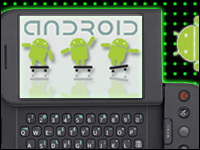
Somehow, some way, the year 2010 may have finally been the year of the Linux desktop — but no one noticed. Maybe no one needed to. In 2010, smartphones got hot, and Android OS smartphones collectively overtook the iPhone in units sold. At the same time, Android tablets gained traction as popular alternatives to the iPad.
A subtle shift in the notion of what defines “desktop,” and suddenly Linux emerges in anonymous glory — leaving Microsoft playing the silly (but familiar and perhaps a bit dangerous) role of catch-up. Looking back, could 2010 really be the year when Linux, in the form of Android, became the desktop?
What is a desktop anyway?
A distinction may be necessary. While I may make a case that 2010 was the year of the Linux desktop, I realize the form factor is different, and it’s a little new. But computers evolve, and the point — that the Linux-based Android is a major player in the user-interface world — is not lost or any less relevant. More important is that in smartphones, Linux trumps Windows. (More data to follow when next of kin have been notified.)
Naysayers may argue that Android as a desktop is a stretch but, really, what does define a desktop? In the first place, “desktop” has always been a muddy metaphor. Seriously, who puts “wallpaper” on a desktop? Distilled to its essence, the computer desktop is an infrastructure providing end-user computing. In that context, smartphones (iOS and Android based) capably provide just that, and in some ways more than traditional desktops do.
Android and Desktop computing
Traditional desktop computing let users do their banking online, make travel arrangements, play games, listen to music, and communicate with friends and family. Android does too, but with some obvious and some nuanced benefits.
Games: Computer games are expensive. Computer games often require extra hardware. Computer games are played at the computer. Android games are dirt cheap, often free. Android games require no extra hardware and have a certain elegance. Sophisticated accelerometers make the Android phone THE controller. No levers or buttons necessary. And you play games anywhere!
Productivity: Computer desktops let users do online banking, typically through browsers. Android applications offer specialized functionality obviating the need to “mobile-down” browser interfaces. Android phone built-in features extend functionality to do amazing things like depositing checks simply by taking pictures of the check. (It really works — we tried this this weekend! Cool!)
The new Android “desktop” also makes life easier. Some airlines are providing access to scannable ticket images letting customers carry their tickets in their cellphone. It’s difficult not to imagine more applications letting users perform nearly all financial transactions via their smartphone.
GPS: GPS on computer desktops is a non sequitur — but on Android phones, it raises a whole new world of possibilities. The new world of “desktop” now fits on a tiny, high-resolution device with technology that tells you where you are, how to get where you want to go, and even finds businesses nearby! And when you use the built-in camera, GPS tags your photos with your picture’s location!
Social Networking: Until recently, the desktop was the only domain for electronic mail. BlackBerry gave a hint of email in a phone. Android phones bring email to the small screen with desktop features. Short of typing long missives, email on the Android provides ease of use and portability to its desktop. For many simple interactions, the touchscreen interface becomes easier than the standard desktop. Certainly it’s nicer than Outlook, in my opinion.
Also, Android lets users carry their social networks with them in the form of specialized Facebook and Twitter applications — again, rendering the notion of social networking on a computer desktop mostly irrelevant.
Staying in touch with friends and family with pictures became easy with computers. Simply shoot, transfer to the computer, and attach to an email. Android makes it easier still. And more immediate. And mobile.
Phone Synergy: Android apps leverage their cellphone underpinnings by enhancing traditional phone features. Everything in a user’s Android universe seems sublimely connected to their phone. Contact lists blur across email and phone “directories.” Phone numbers on Web pages turn into clickable links to instantly connect to that important number. Applications like Google Voice integrate the popular suite of Google apps with Android.
Internet:The Internet on Android is seamless. Multitouch navigation lets users easily surf the Internet. What used to be a tedious series of clicks and keystrokes is now intuitive and fast browser interaction using simple touchscreen gestures.
So, With a Twist, the Linux Desktop Arrives
So, the Linux Desktop may have arrived. It just arrived in a different form factor. And it arrived a little later than we expected (remember how 2000 was the year of the Linux desktop? 2001? 2002?… ha!). Android shows how agile and powerful Linux as a platform is for “desktop” users. This is especially highlighted by Microsoft’s inability to get traction in the new computing world with its unwieldy and unadaptable desktop.
I tip my red hat to Linux, Google and Android. They have pulled off what we all knew was possible — and they did it in one of the most competitive markets, smartphones. End-users may not know 2010 was the year of the Linux desktop, and some Linux purists may argue away the Android as “not a desktop.” But Android is good news for Linux and solid evidence that the Linux Desktop has arrived.
Elbert Hannah lives in the Chicago area and does production and scheduling support for a large financial firm. He wrote the most recent edition of O’Reilly’s Learning the vi and Vim Editors. He has used Linux and worked actively in the open source community for over 10 years. In and around the house, he has more than 10 instances of Linux and as many versions and distros. He doesn’t like technical religious wars and prefers things to be sorted out by merit. He loves the Beatles and thinks the greatest album recorded is Abbey Road.


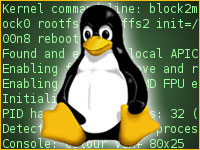
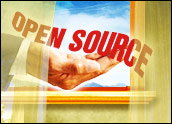

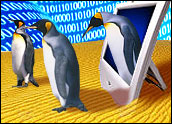

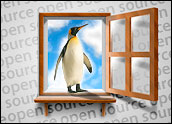
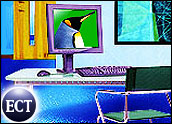









































The advent of smart phones and tablets is not a desktop revolution, rather it is the evolution of a new paradigm for personal information management.
People are used to going to the internet to do their personal business whether it is sending notes, making contacts, or getting some news. That occurred because desktop computers made it possible, but now there is a lot of synergy in simply being connected and the popularity of smart phones and ultimately tablets is just an extension of that.
The smart phones and tablets do not replace the desktop, they add to the use of the internet. Desktop sales continue to rise and they rise without Linux. For that matter, Linux gets no mention, even for phones and tablets. Rather it is Android vs iPhone and iPad. And, unless you are a device maker, there is very little money in the system when compared to desktop computer software.
I think "the year" was 2009. By then all the heavy lifting had been done. 2010 is when the salesmen finally went to work for Linux. So it was Android/Linux. It was still Linux. By the end of 2011, we will see substantial intrusions of Linux into all forms of personal computing. Perhaps a year is not big enough to hold all this change. Perhaps it will be a decade of Linux. Against this onslaught of ARM all M$ has is Phoney7 and LoseCE, placeholders.
the new motorola Atrix phone/computer with android is indeed the future and has both the mobile gui and the desktop gui:
http://www.engadget.com/2011/01/06/motorola-atrix-4g-hd-multimedia-dock-and-laptop-dock-hands-on/
So YES! mainstream linux has arrived! (at least in the form of mobile desktops)
Once the competition brings in their own phone/computer android combos, this segment will explode!
but that doesnt mean we dont support traditional desktop distros. Each one has it’s strengths and there’s something (even a gui) for everyone.
But the war is far from over yet, we still need more recognition and big apps to come our way, so hopefully the new "app-stream" effort and web3.0 will help us do that.